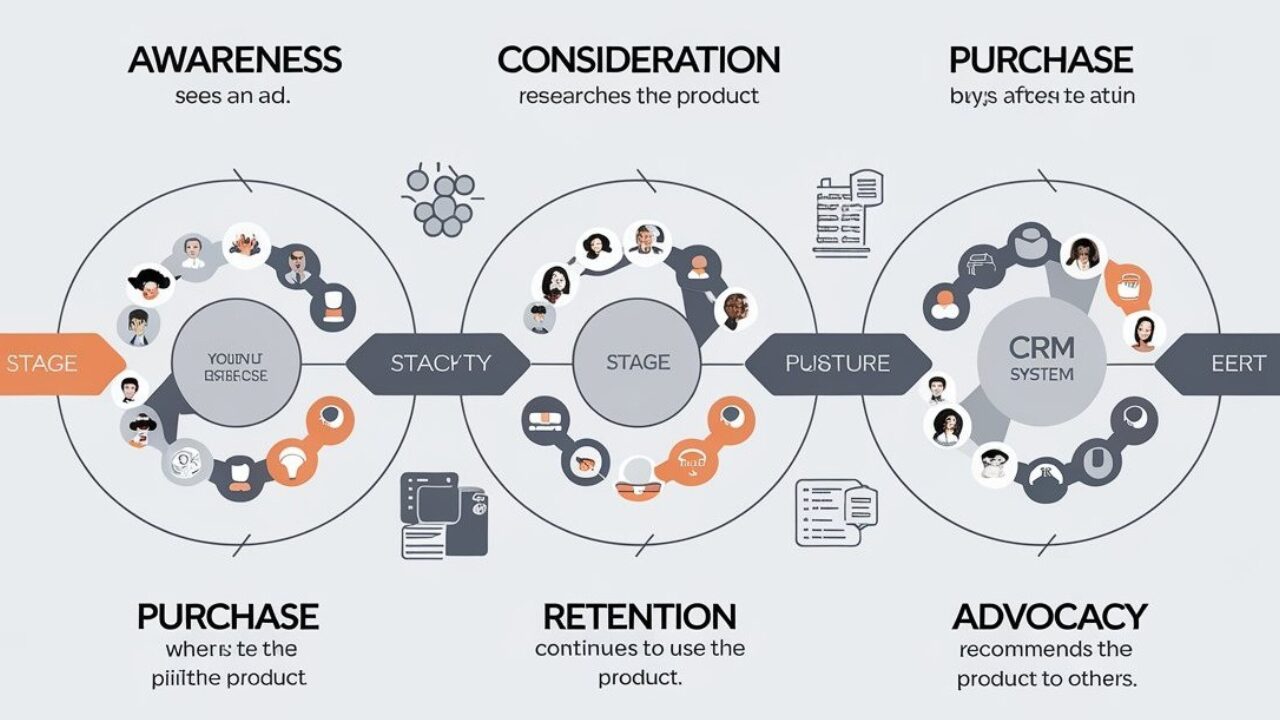
In today’s competitive market, understanding your customer’s experience is critical for building long-lasting relationships and improving business outcomes. Customer Journey Mapping (CJM) is a powerful technique that helps visualize each touchpoint customers have with your brand, allowing businesses to understand their needs, pain points, and behaviors better. By integrating this process into a CRM system, businesses can refine their strategies and deliver a seamless, personalized customer experience.
Why Customer Journey Mapping Matters
Customer Journey Mapping allows businesses to visualize the entire path customers take, from initial awareness to post-purchase advocacy. This mapping process enables companies to understand the motivations, challenges, and decisions that drive customers. When done correctly, CJM can:
- Boost Customer Satisfaction: Organizations that utilize journey mapping report significant increases in customer satisfaction and loyalty(
- Identify Communication Gaps: CJM helps identify gaps in customer interactions, ensuring more effective communication(
- Enhance Engagement: Mapping helps businesses deliver timely, relevant content that resonates with customers at different journey stages.
How CRM Systems Enhance Each Stage of the Customer Journey
1. Awareness Stage
At the start of the customer journey, the focus is on attracting potential customers to your brand. CRM systems like EZClik can capture leads from various channels such as social media, email campaigns, and website traffic, providing insights into how customers first interact with your business. CRM tools track user behavior and help you understand which content or campaigns are most effective in driving awareness.
2. Consideration Stage
As customers evaluate their options, CRM data is critical for personalizing their experience. A CRM system allows businesses to segment their audience and deliver targeted content based on customer interests, such as product demos or case studies. EZClik, for instance, can automate personalized recommendations, helping businesses nurture leads and guide customers toward conversion( Insightly).
3. Decision Stage
In the decision-making stage, customers are ready to purchase, and their journey culminates in choosing a product or service. CRM systems track customer preferences and purchasing history, enabling sales teams to tailor their outreach. With CRM integration, businesses can offer special promotions or personalized consultations to help close deals, ensuring customers feel confident in their decisions (Hanover Research).
4. Post-Purchase and Retention
Customer relationships don’t end with a purchase. CRM tools help businesses stay connected by tracking post-purchase behavior and identifying opportunities for upselling or cross-selling. Regular follow-ups, loyalty programs, and customer support can be managed seamlessly through CRM systems like EZClik, which allows businesses to maintain long-term customer engagement.
5. Advocacy and Loyalty
Satisfied customers are likely to become brand advocates. CRM systems capture feedback, manage referrals, and create shareable content that fosters customer advocacy. By leveraging CRM data, businesses can ensure that loyal customers are recognized and rewarded, turning them into powerful brand ambassadors(Close CRM).
Key Takeaways
- Visualize the Customer Journey: Mapping out every customer touchpoint ensures a deeper understanding of customer needs and pain points.
- Use CRM Data for Personalization: CRM tools like EZClik help businesses deliver personalized experiences at every stage of the customer lifecycle.
- Identify and Address Gaps: Customer Journey Mapping identifies gaps in communication and engagement, allowing businesses to improve their approach.
- Build Loyalty: CRM systems enable businesses to nurture long-term relationships, enhancing retention and advocacy.
